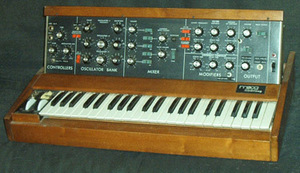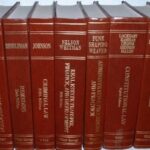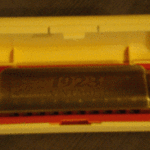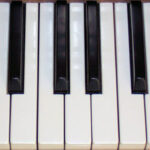This article isn’t about pianos or guitars. The instruments that I’m writing this article about may be well known to some, yet at the same time, completely unknown to others. These instruments have been utilized by many musicians since their recent inception; you’ve probably heard them in quite a lot of songs, but wouldn’t recognize them at first unless you were familiar with the instruments already.
The first instrument I shall start with is called the melodica. The melodica is a wind instrument that was created by a German company named Hohner in the late 1950s. It is a free-reed instrument that is somewhat similar to the accordion and the harmonica. There is a keyboard on top of the melodica that you use one hand to play, and with the other hand you hold the instrument and blow air into a mouthpiece that is situated at the front of the instrument, similar to a clarinet or flute. The keyboard is normally either two or three octaves long.
Variations have been created on the melodica keyboard through the years and have been made by lots of different companies. Each company has given the melodica a different name, like blow accordion, melodeon, melodyhorn, wind piano, pianica and cassotto.
If you’d like to learn how to play the melodica, it’s worth noting that there are few books out there that can teach you how. Instead, it’s recommended that you experiment a lot with the instrument and get yourself acquainted with piano scales beforehand if at all possible.
One piece of interesting trivia about the melodica is that Mark Mothersbaugh of the band Devo was the only person in the Ohio Musician’s Union that listed his melodica as his primary instrument.
Here is a list of some of the other musicians who have employed the melodica in their songs:
Jon King of Gang of Four
Paul McCartney of The Beatles and Wings
Martin Gore of Depeche Mode
Ian Curtis of Joy Division
Peter Murphy of Bauhaus
Donald Fagen of Steely Dan
Joe Jackson
Rick Davies of Supertramp
Mark Hart of Crowded House
Mike Patton of Faith No More
Stevie Wonder
Bernie Worrell of Parliament/Funkadelic
Bernard Sumner of New Order
Paul Arthurs of Oasis
Damon Albarn of Blur
The second musical instrument in this article is called the Moog. It’s much more likely that readers are acquainted with this instrument rather than the melodica.
The Moog keyboard was invented by a man named Robert Moog. Robert originally started out building and selling theremin kits in 1961 and sold 1,000 theremin kits out of his apartment during the years 1961 to 1963. After this, Robert Moog began studying transistorized synthesizers from Harald Bode.
When Robert Moog had completed his synthesizer, he used his theremin company R.A. Moog Inc. to market his synth. The Moog was not originally considered an instrument for performance, but a studio-oriented audio system that could also double as a musical instrument.
Mick Jagger was one of the first people to buy a Moog in 1967, although he only used it once as a prop on a film set and then promptly sold it to German band Tangerine Dream. The Beatles employed a Moog on their 1969 album Abbey Road, although they weren’t the first group to use it. The first phonograph record that used a Moog on it is thought to be The Zodiac’s Cosmic Sounds. But as far as popular records go, since Micky Dolenz of The Monkees was the proud owner of one of the first Moogs sold, it makes sense that he would employ it in 1967 on The Monkees’ album Pisces, Aquarius, Capricorn & Jones Ltd.
The jazz composition The Minotaur was the first Billboard Top 40 hit single that featured a Moog, and the first live performance of this music synth was by Paul Bley in 1969.
Wendy Carlos used the Moog synthesizer for the soundtrack of 1971 film A Clockwork Orange. This helped to shape the mood of the movie.
It was Giorgio Moroder who introduced the Moog synthesizer to the disco word in Donna Summer’s I Feel Love.
Moog Music began producing the Minimoog in 1971 and it was one of the first portable and affordable synthesizers on the market. And, unlike the previous model, the Minimoog was a self-contained musical instrument.
Moog synthesizers can still be bought online and elsewhere, although they usually come at a rather steep price. You can find a Minimoog on eBay — but it will run you around $3,000 to buy it. But if a retro sound is what you crave, the Moog is the right instrument for you.
Sources: www.obsolete.com/120_years/machines/moog, www.melodicas.com/melodicas.htm, wikipedia






